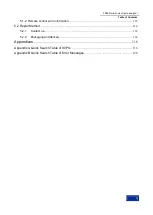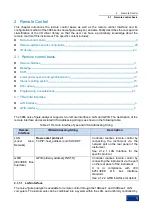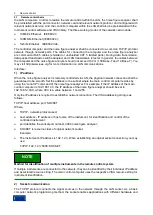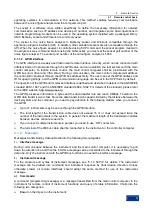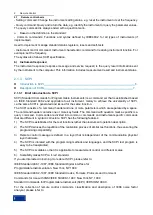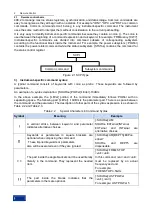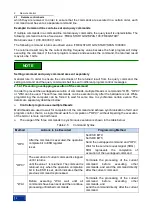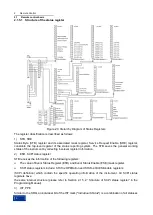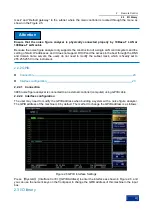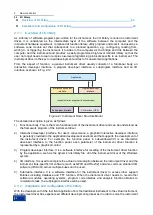
2
Remote Control
2.1 Remote control basis
13
6) Systems of Values in Commands
The value of the command can be entered in binary, decimal, hexadecimal or octal format. In the binary,
hexadecimal, or octal format, a suitable identifier should be added in front of the value. Decimal system
(default format) does not require an identifier. When a value is entered without a preceding identifier, the
device ensures that it is in decimal format. The identifiers required in all formats are listed as follows:
#B indicates that this digit is a binary value.
#H indicates that this digit is a hexadecimal value.
#Q indicates an octal number.
The representations of the decimal value 45 in the SCPI are given as follows:
#B101101
#H2D
#Q55
The following example shows setting of the RF output power as 10 dBm (or the value equivalent to the
current selected unit including DBUV or DBUVEMF) with the hexadecimal value 000A.
:POW #H000A
When a non-decimal format is used, a unit of measurement (such as DBM or mV) is not used with
values.
7) Command line structure
A command line may contain multiple SCPIs. To indicate the end of the current command line, the
following methods can be used:
Enter;
Carriage return and EOI;
EOI and the last data byte.
Commands in command line are separated by semicolons, and commands for different subsystems
begin with a colon. For example:
MMEM:COPY "Test1", "MeasurementXY";:HCOP:ITEM ALL
The command line contains two commands of which the first one belongs to the MMEM subsystem and
the second one belongs to the HCOP subsystem. If the adjacent commands belong to the same
subsystem, the command path will be partially repeated and the command can be abbreviated. For
example: For example:
HCOP:ITEM ALL;:HCOP:IMM
The command line contains two commands both of which belong to the HCOP subsystem of first level.
Therefore, the second command can begin with the subordinate to HCOP and may not begin with a
colon, which can be abbreviated to the following command line:
HCOP:ITEM ALL;:HCOP:IMM
2.1.4
Command sequence and synchronization
IEEE488.2 defines the difference between overlapped commands and sequential commands:
Sequential commands are sequences of commands that are executed continuously. Usually, each
command is executed fast.
Overlapped commands indicate that the previous command is not executed automatically before
the next command is executed. Normally overlapped commands take longer to process and allows
the program to process other events synchronously.
Even if multiple commands are set in a command line, they are not necessarily executed in the order in

